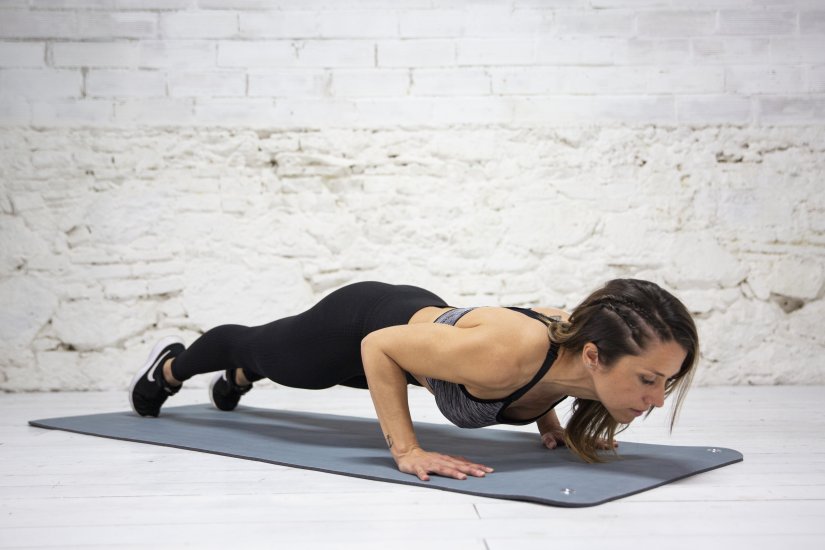How to do Push-Ups properly. Tips and techniques

Push-ups are one of the best known and most used exercises around the world, since many muscles are involved for their correct execution and they work one of the most basic movements: the horizontal push.
It is common to see people doing push-ups in their daily workouts, but it is very important to do them correctly.
Tips to keep in mind when doing a push-up
The most important thing to remember is that the technique is not universal, since each person is different. Even so, there are several points that are often repeated and are valid for most of the population.
- The position of the hands. To perform a classic push-up, the hands should remain below the elbows at the start of the movement (when the pectoral touches the ground). In this way, without being more closed or more open, more forward or more backward, the wrists and elbows suffer less risk.
- Height of the elbows. From putting the elbows at shoulder height (90º approx.) Or completely close to the body (0-10º approx.) There is a wide range of possibilities. In classic push-ups, for most people, the ideal is not to exceed and in many cases not reach 90º due to mobility and possible discomfort in the shoulders, and not get too close to 0-10º, since the work of Triceps and anterior deltoids would be greatly increased, leaving more of the pectoral side. Thus, we would be left with a range of between 20-30º and 70º-80º degrees, where each person can position themselves according to what they feel more comfortable and notice the work.
- Position of the back and hips. Both the abs, the psoas and the quads, among others, must work to keep the position of the lower back and the hips neutral. In beginners, it is sometimes advisable to do a voluntary pelvic retroversion (such as squeezing the buttocks and eliminating lumbar lordosis) to avoid sinking the lumbar too much, since there is insufficient control. Once you have the strength and control so that the lumbar does not sag and the hips do not fall, we should try to maintain the neutral and natural position of our spine during the exercise.
- Shoulders, traps and tension. It is common that sometimes, without realizing it, we raise our shoulders, bringing them closer to the neck and ears while doing certain tasks. While exercising it is also frequent, for example, in push-ups. We must try to keep the shoulders in position, without tensing or raising them.
- The neck and the look. Finally, it is important to focus your gaze towards the ground, if we want a little forward, but without overdoing it, since we must try to keep the neck position neutral, just as it happened with the lumbar. Being with a lot of flexion (looking very down, bringing the chin to the body) or with a lot of extension (looking very forward, separating the chin from the body), can end up producing discomfort.
Do push-ups according to our level
Now that we have discussed how to do push-ups properly, and what you should take into account to avoid discomfort and injury, it is important to note that you have to adapt the push-ups to your level.
If you are just starting out, start with simple push-ups, until you get used to the correct gesture. It is also very important that you respect the breaks and that you do not do many repetitions.
If you are already in good physical shape and are used to doing push-ups and have mastered the correct technique, you can increase the number of repetitions and sets. Even so, from SUIFF we recommend that you always consult a professional to advise you on the best training for you.
If you have any questions, our team of professionals will be happy to advise and guide you in your training.

